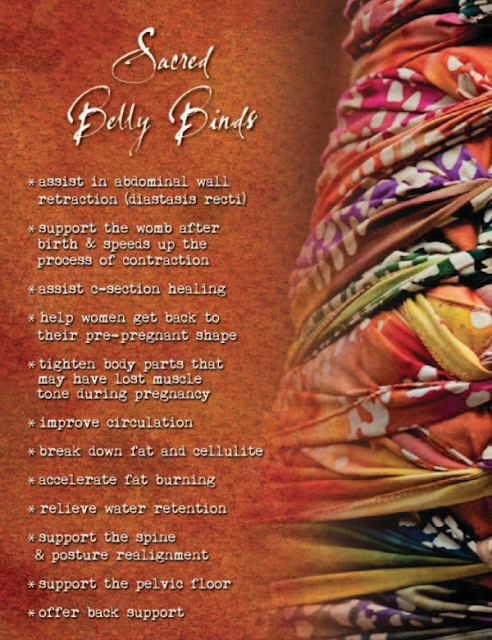
Written by Master Mother Roaster Sara Harkness
Birth is an incredible, amazing and intense journey. As women, our bodies go through a lot of hard work to bring a child into the world. Through all of this work, through the triumphs, sorrows and joys, the sweat and tears, we are left open. We must allow ourselves to be open when we birth a child.
That openness can then leave us feeling empty after birth. Our bodies have been a vessel that carried and nurtured a small one (or even several small ones) for months. It is no wonder that our bodies would experience a vast emptiness once we have completed the birthing process. So, what then? How do we close ourselves after we have opened for something as incredible as birth? Well, why not have a beautiful closing ceremony.
While pregnant, women will have people "oooh" and "aaah" over their growing belly. After birth, that
attention seems to be turned to the baby. While it's well-intentioned, let's look at continuing to focus and honor the woman who made this birth possible. No, I don't mean the midwife or attending physician. I mean the mother. The continued care and keeping of mom, mothering her, can play a vital role in mom's healing.
Add to this a ceremony to "close the birthing process," and you are honoring the mother. As she heals, celebrates the life of her new child, and transitions into her role as mother, there is no greater honor than to recognize this process via ceremony.
Sealing ceremonies may seem strange to those of us living in the United States, or in other countries where there isn't a lot of emphasis put on the postpartum healing process, but it does happen in other parts of the world such as Malaysia and China. In other nations women are still mothering women after birth, honoring them for the incredible sacrifice that they have made, bestowing blessings upon these new mothers, holding space to allow these women to heal and close what was opened when they birthed their babies, and welcoming them back into society. The questions are, why don’t we do this in our country and what would happen if we did?
A SACRED tuck-in is a service in which several scarves are laid out one above the next. The mother lies down on top of the scarves and warm herbal flax-seed or herbal rice packs are placed across vital points on the mother's body (eyes, shoulder/heart, abdomen/womb, hips, knees, feet). As the warm herbal packs are placed, the scarf is brought up around the mother at each point and tied to allow for
a "tuck-in." She then lies there resting for a period of time being enveloped in the warmth.
The essence of all of this is meant to bring to light the importance of honoring new mothers, honoring their process, recognizing that each mother is different, but each deserving of having the space to be held, warmed, honored, and made to feel loved. When we limit our care to just when a woman is pregnant, we lose focus of the vital role that women play in birth, in life, and in creation. The time is now to come back full circle, and revive this important piece of the pregnancy and birthing process.
Closing the birth process is critical for so many reasons: energetically to finish the process, physically to heal the body, and spiritually to properly step over the threshold from maiden to mother.
In Latin American countries this is commonly practiced by midwives as ‘closing the bones’ postpartum. It is traditionally done at day 3 postpartum but we have found woman LOVE it and benefit from it even 25 years postpartum!
In Ecuador, it is sometimes given within hours of giving birth and repeated 5-6 times within the first 40 days.
Our variation of the closing of the bones that we call the Sacred Sealing Ceremony In is perfect after a ceremonial bath and a nice sesame oil warming rub down and when the mama is fully relaxed. It is never too late for a mama to practice this form of postpartum care!
This ceremony can serve several purposes for the postpartum mama:
*Physically it brings her back together, squeezing her joins and hugging all the areas that pregnancy and relaxing have loosened. It stimulates blood flow which in turn can help clean and renew the mother by moving fluid in her body. This can then help with finding balance for her hormones, immune system, toning muscles and tissue.
*Energetically it will bring her back together by holding her energy close. You can remind her to set intentions of coming home. She can invite all the threads of herself that may be have been scattered during the birthing process to be pulled back together.
*Emotionally it gives her a specific act/time to focus on sealing the birth process. By setting intentions of closing the birthing time and entering fully into motherhood she is able to emotionally transition herself in a way that western culture seldom allows.
To find out how to receive this service please visit our Services page, or send Sarah an email: SacredLivingAlaska@gmail.com












